Planning a trip to Florence? Fascinated by the Medici Family? Follow this self-guided walk and uncover Medici Florence through the artistic and architectural legacy the Medici left behind.
Florence owes its fame of being the cradle of the Renaissance not only to the extraordinary talent of its artists, engineers, and inventors but also to the powerful Medici Family.
The Medici ruled Florence for over three centuries (1434 – 1737) and during this time, the family produced four popes of the Catholic Church, two Queens of France and sponsored such masters of the Renaissance as Brunelleschi, Botticelli, Leonardo da Vinci, Michelangelo, Rafael, Donatello, Machiavelli, and later, Galileo.
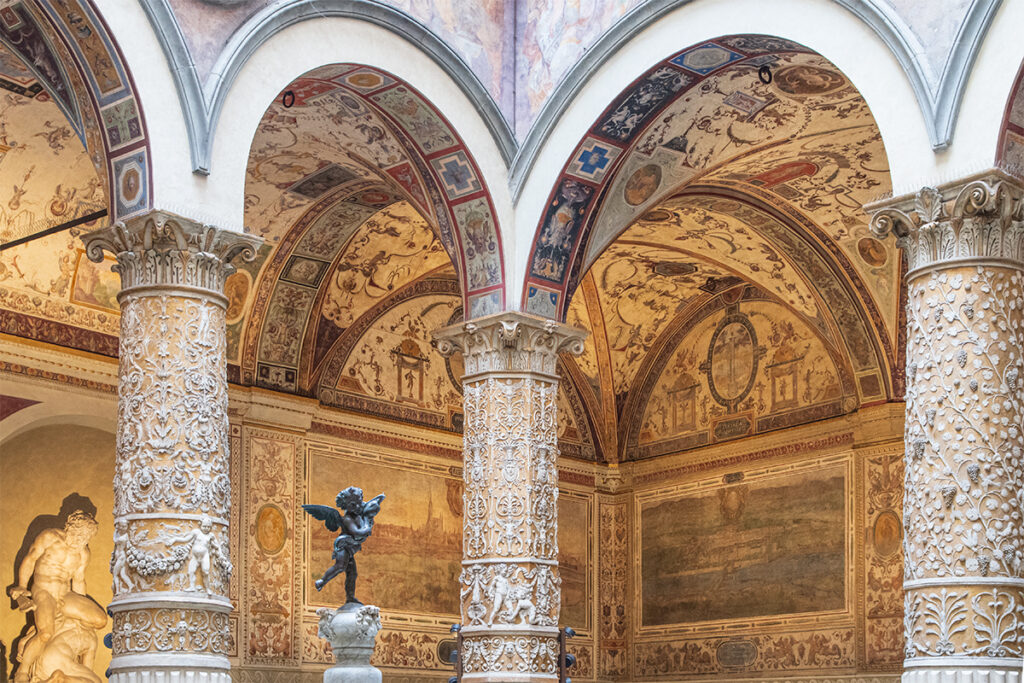
The early part of the Medici family history (which I find the most romantic and interesting) had been brought to life by the Netflix British-Italian series Medici: The Masters of Florence. While most of the filming for the series was done in various small towns across Tuscany, some scenes were also filmed in Florence, including Palazzo Vecchio, Florence Cathedral, the Baptistery, Bargello Palace, and Basilica of San Lorenzo. So if you are a fan of the show, many of the places in this guide will be familiar.
This introduction to Medici Florence is organized geographically as a walking itinerary. You can customize it to your interests, depending on how deep you wish to delve into the world of Medici and how many museums associated with the family you wish to visit.
For ease of planning, this walking itinerary is divided into three areas: the Medici Quater, the two squares (Piazza del Duomo and Piazza della Signoria) and the Palazzo Pitti & Boboli Gardens Complex on the south bank of the Arno River.
Who is Who in the Medici Family
As a dynasty that ruled Florence and later all of Tuscany for three centuries, the Medici family has a long and eventful history that could (and does!) fill many books. But for the purposes of exploring the cityscape of Florence during the Renaissance, it is enough to focus on a few of the most influential family members who had a deep appreciation of beauty and the arts.
Giovanni de Medici
The first Medici to acquire spectacular wealth was Giovanni de Medici – the founder of the Medici Bank and the family’s first serious patron of culture and the arts.
Among many other projects, Giovanni commissioned Filippo Brunelleschi to undertake major restorations of the Basilica of San Lorenzo, which was crumbling to pieces at the time. The original structure dates back as far as 393 AD, and after the restorations, San Lorenzo became Medici’s family church.
Cosimo the Elder
The first Medici to become an essential part of Florentine history was Giovanni’s son, Cosimo de Medici, who later became known as Cosimo il Vecchio or Cosimo the Elder. It was thanks to Cosimo’s patronage that Brunelleschi built his magnificent dome for Florence’s new Cathedral, which stood with a hole in its roof for almost a century, waiting for a genius mind to design a big enough dome.
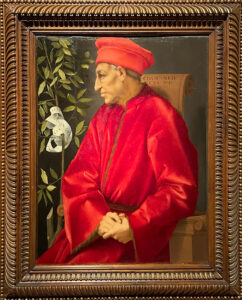
Cosimo had the first family mansion built in Florence (Palazzo Medici-Pitti) next to the Basilica of San Lorenzo, beginning to shape a neighbourhood that would become known as the Medici Quarter.
Beyond his own palace, Cosimo funded the renovations of San Marco Monastery by Michelozzo, established Europe’s first public library and possibly commissioned the first male nude sculpture of the Renaissance, Donatello’s famous David, currently housed in the Bargello Museum.
Lorenzo the Magnifiscent
During the rule of Cosimo’s grandson, Lorenzo il Magnifico or Lorenzo the Magnificent, Florence became the universal capital of culture and the arts. The Medici Palace became a cultural reference point not only in Italy but throughout Europe as well.
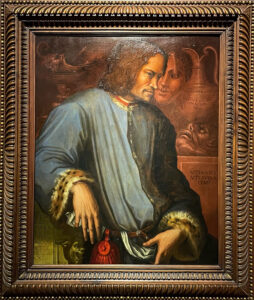
A patron of philosophy, poetry, and literature, Lorenzo celebrated Plato’s birthday (7 November) each year with all the friends in the literary circle of the Medici.
Lorenzo famously founded a school of sculpture in an area known as Medici Gardens located between the Medici Palace and San Marco, in the heart of the Medici Quarter. This is where Lorenzo first encountered the young Michelangelo and was so impressed by the artist’s skills that he invited him to join his court. Michelangelo stayed in his own rooms at the Medici Palace for four years until the family fortunes turned.
Cosimo I
The next powerful Medici ruler, Cosimo I, came from the secondary branch of the family that stems back to Lorenzo the Elder, Cosimo the Elder’s brother. That branch not only outlived the principal family branch but also raised the family to the status of the Dukes of Tuscany.
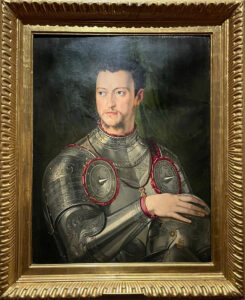
In 1540, Cosimo I moved the family headquarters to Palazzo Vecchio, which had been the seat of the Florentine government since 1299. Nine years later, he moved the family residence again, this time across the Arno River to the sprawling Palazzo Pitti.
Cosimo I also commissioned the construction of what we know today as Ufizzi Galleries, the building that was initially intended as a palace to contain all the civic offices of Florence under one roof.
Around the same time, he commissioned the building of an elevated corridor (Vasari Corridor) to connect the offices to his residence in the Palazzo Pitti so that Medici family members did not have to mingle with the general populace on the way from home to the office and could enjoy spectacular art adorning the walls of the corridor instead.
Anna Maria Luisa de Medici – the Last Medici
So, does the Medici family still exist in Florence? Unfortunately, not. The last member of the House of Medici was Anna Maria Luisa de Medici, who died in 1743 in the Pitti Palace. She left no heirs, and the Medici dynasty ended with her.
But Anna Maria Luisa did leave behind the priceless art that belonged to the Medici family. She signed a pact with the Hapsburg-Lorraine family, who succeeded the Medici, stipulating that Florence’s precious art should remain the property of Florence, including a clause for the Uffizi Gallery to be transformed from a private collection to a public museum.
Now that the main players have been introduced let’s explore the legacy of the Medici in Florence.
Tip: The Medici, like other powerful families in Florence, used their coat of arms to identify buildings and works of art as their own. So, as you stroll around Florence, keep an eye out for their crest – a golden shield with several red balls and a blue one with three golden lilies encircled in it.
Medici Florence: The Medici Quarter
The cradle of the Medici Family is a neighbourhood in the centre of Florence that used to be known as the Medici Quarter. You won’t find it on any modern maps of Florence or in the guidebooks. In the days of Cosimo the Elder, it was an area between the Basilica of San Lorenzo and the Monastery of San Marco.
Basilica of San Lorenzo
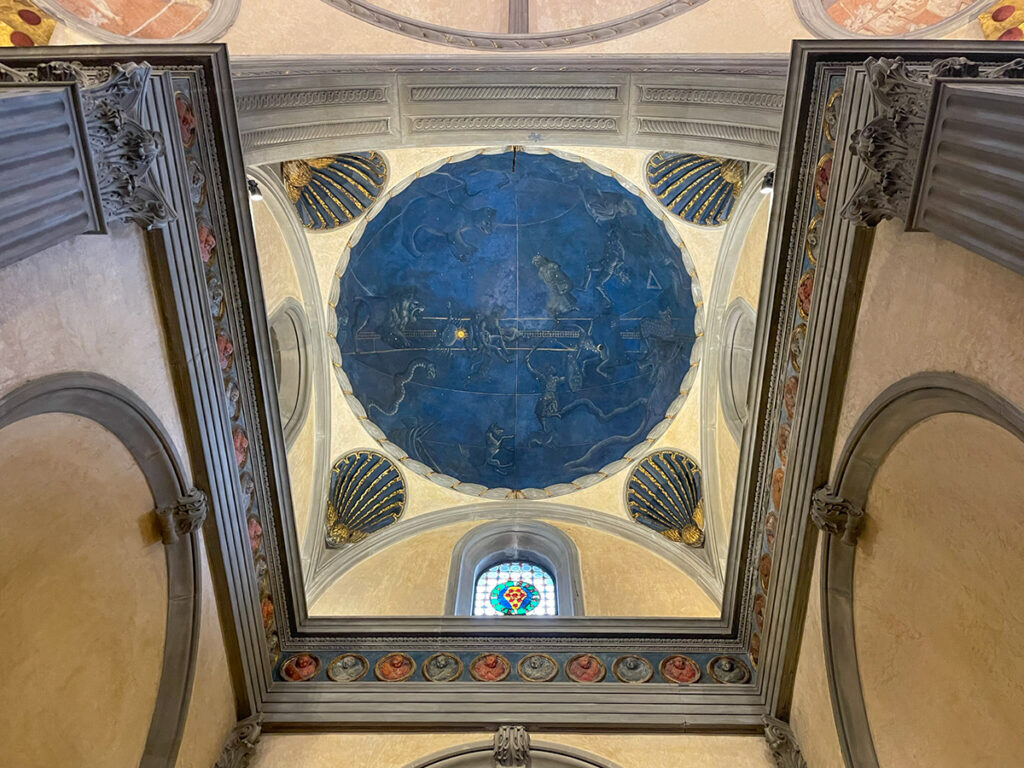
- Time to visit: 30 min to 1hr
- Tickets: Purchase at the ticket office in the Basilica. Tickets for the Medici Library are sold separately.
Start your explorations of Medici Florence at the Basilica of San Lorenzo – the parish church of the Medici family and the burial site of the prominent, mostly male, Medicis.
From the street, San Lorenzo is not much to look at. The exterior of the basilica appears rough and unappealing. This is because it was never finished. It was supposed to be covered by a spectacular façade by Michelangelo, but due to lack of funds and changes in the Medici family’s fortunes, the decorative covering was never added.
The artistic treasures of the basilica are found inside its many rooms and chapels. The Basilica of San Lorenzo is actually a complex of buildings designed and decorated by some of the finest artists of the Renaissance.
The basilica itself includes the Old Sacristy, designed by Brunelleschi and decorated by Donatello, the Laurentian Library by Michelangelo, and the Medici Chapels composed of the New Sacristy, designed and decorated by Michelangelo and the sumptuous Chapel of the Princes.
You will find the sarcophagus of Cosimo the Elder in the basilica’s crypt. The Old Sacristy houses the sarcophagi of Giovanni di Bicci de Medici and his wife Piccarda Bueri, and of Cosimo’s two sons: Giovanni and Piero.
In 1444, Cosimo founded the first public library in Europe – the Laurentian Medici Library. The library was first housed at the Medici palace, but Michelangelo later designed a dedicated space for it adjacent to the basilica. The spectacular library contains over 3,000 manuscripts collected by the Medici family.
Medici Chapels
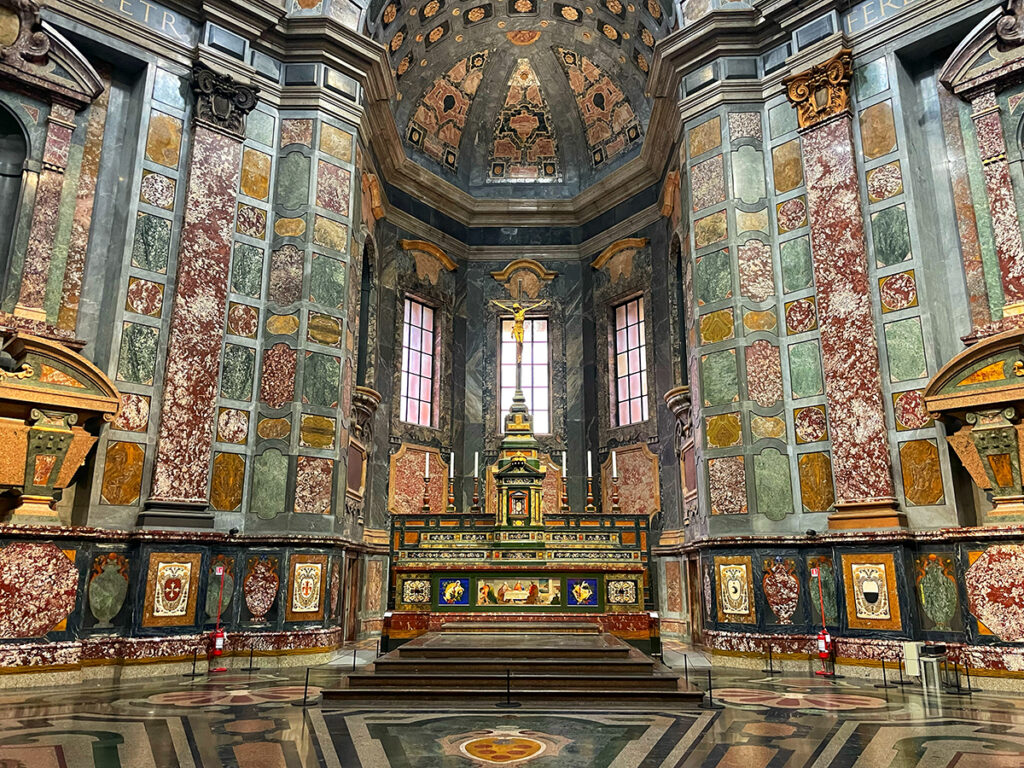
- Time to visit: 1 hour
- Tickets: Combined tickets for San Lorenzo Basilica, the Crypt & Treasury, Old Sacristy and Laurentian Library can be purchased at the basilica
- Tickets for Medici Chapels: Purchase timed entry tickets online at B-Ticket or on GetYourGuide
The spectacular Medici Chapels are part of the San Lorenzo complex, but they have a separate entrance and require a separate ticket/booking. As with all famous sites in Florence, it’s best to buy your tickets online in advance.
The chapels are composed of two rooms: the elegant New Sacristy, designed by Michelangelo, and the ostentatious Chapel of the Princes, strikingly decorated with white, red, and green marble.
The New Sacristy houses the sarcophagi of Lorenzo the Magnificent and his brother Giuliano de Medici, as well as a sarcophagus of another Lorenzo de Medici – the Duke of Urbino, and another Giuliano de Medici – the Duke of Nemours.
Michelangelo planned to carve the sculptures for all sarcophagi, but the only ones he actually completed were the statues of the Dukes Lorenzo and Giuliano, the allegories of Dawn and Dusk, Night and Day and the group of Madonna and Child placed above the sarcophagus of the two “magnificos”.
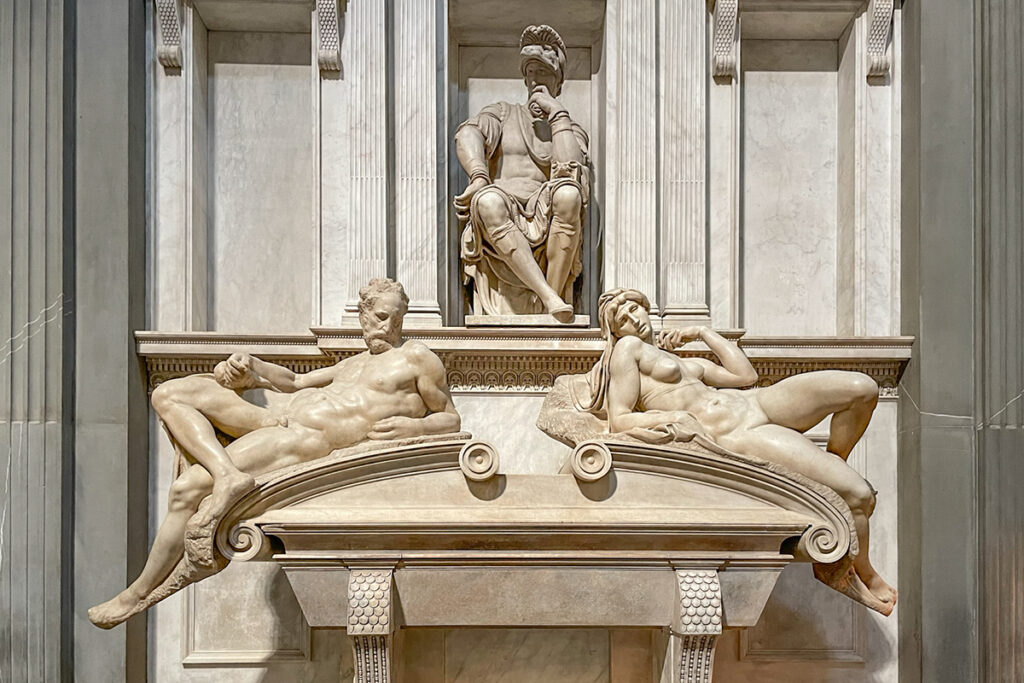
It is ironic that Michelangelo didn’t finish the sculptures for Lorenzo the Magnificent, considering that the artist was practically a member of Lorenzo’s household and even had his own room at the Medici palace.
Two centuries after the completion of the New Sacristy, the opulent Chapel of the Princes was added to the family church. This chapel is quite possibly the most lavish room in all of Florence. This is where you will find the sarcophagi of Cosimo I, the Duke of Tuscany and his wife Eleanor of Toledo, among other prominent Medici family members.
The two chapels are spectacular, although in different ways. I consider Medici Chapels as a must-see, even if you only have 1 day in Florence.
Medici-Ricardi Palace
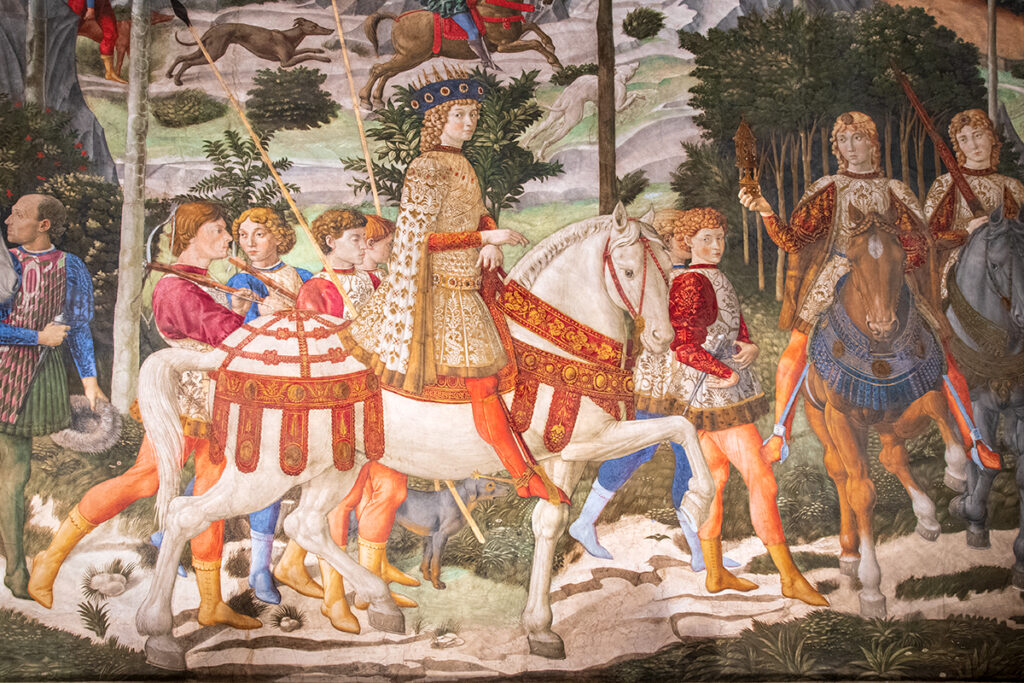
- Time to visit: 30 min to 1 hour
- Tickets: Purchase at the ticket office at the Palace
Of the three Medici palaces in Florence, the family’s first residence, Palazzo Medici-Ricardi, is the most special. This palace is where the story of the Medici family began. If you watched the Medici TV show, this is the palace where the family lived at the time. It was home to two of the most illustrious Medici family members – Cozimo the Elder and Lorenzo the Magnificent. This was the time of Medici’s greatest patronage of the arts, known as the Golden Age of Florence.
One of the artists Cosimo commissioned to decorate his palace was the infamous playboy friar, Filippo Lippi. One of the most talented early Renaissance artists, Lippi was so enticed by women that he couldn’t concentrate on his work. According to Vasari, Cosimo locked Lippi in his rooms at Medici Palace to make sure he concentrated his energies on the commission. But after a few days, Lippi cut up a bunch of sheets to make himself a rope and climbed out of the palace’s window for a week of debauchery.
One of Lippi’s apprentices was Sandro Botticelli – one of the most famous artists of the Renaissance. He spent most of his life working for the Medici family and had his own studio space in this palace.
Another artist closely associated with Lorenzo the Magnificent was Michelangelo. He also lived in the Medici Palace until the family fortunes turned, and they were exiled from Florence.
Other artists like Verrocchio, da Vinci, and Ghirlandaio were also part of the Medici court in Palazzo Medici-Ricardi.
The first design for the palace was drawn by Filippo Brunelleschi. However, his design was so lavish that Cosimo felt it would paint an image of a family that was shamelessly flaunting its wealth.
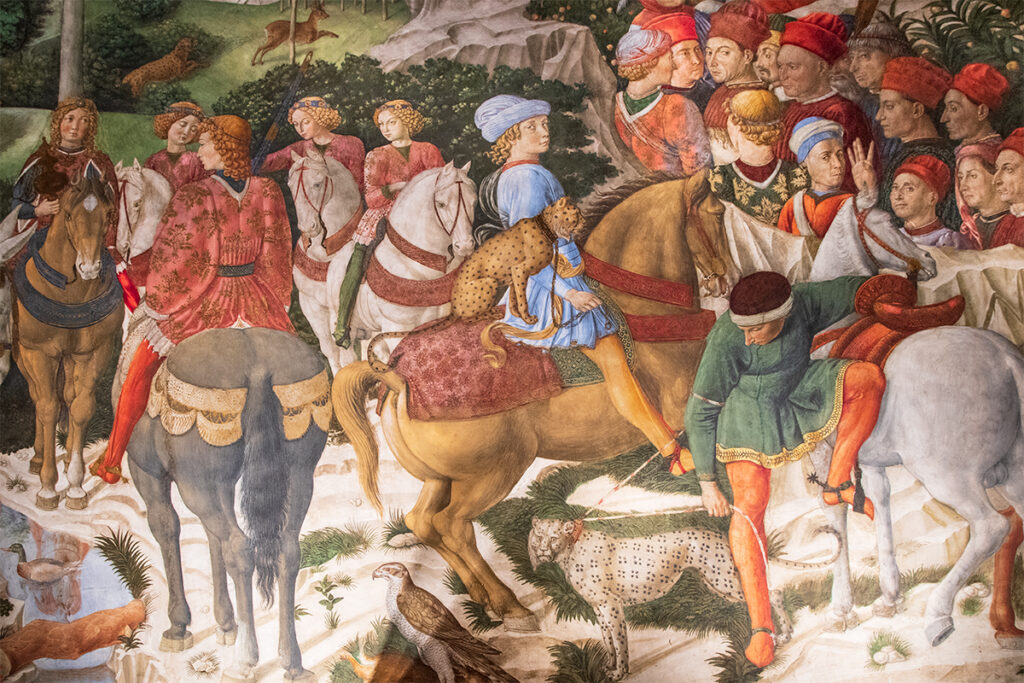
Instead, Cosimo commissioned Michelozzo, one of his favourite architects, to design an elegant but somewhat understated palace you see today.
There isn’t much to see inside the palace that dates back to the Medici times, apart from the stunning Magi Chapel, famously frescoed by Benozzo Gozzoli in 1459. The frescos that cover 3 walls in the chapel paint the story of the procession of the three Magi on their way to Bethlehem to witness the birth of Jesus.
Cosimo’s biggest political accomplishment was hosting the talks between the Pope and the Patriarch of Constantinople in an attempt to reconcile the Greek Church with the papacy.
And so Gozzoli elegantly combined the religious theme of the frescos with depictions of several members of the Medici family, including young Lorenzo, Giuliano, Cosimo, and their allies like the Byzantine Emperor.
The frescos are absolutely exquisite, and if you visit Florence in winter, especially first thing in the morning, you might have the chapel to yourself.
San Marco Monastery
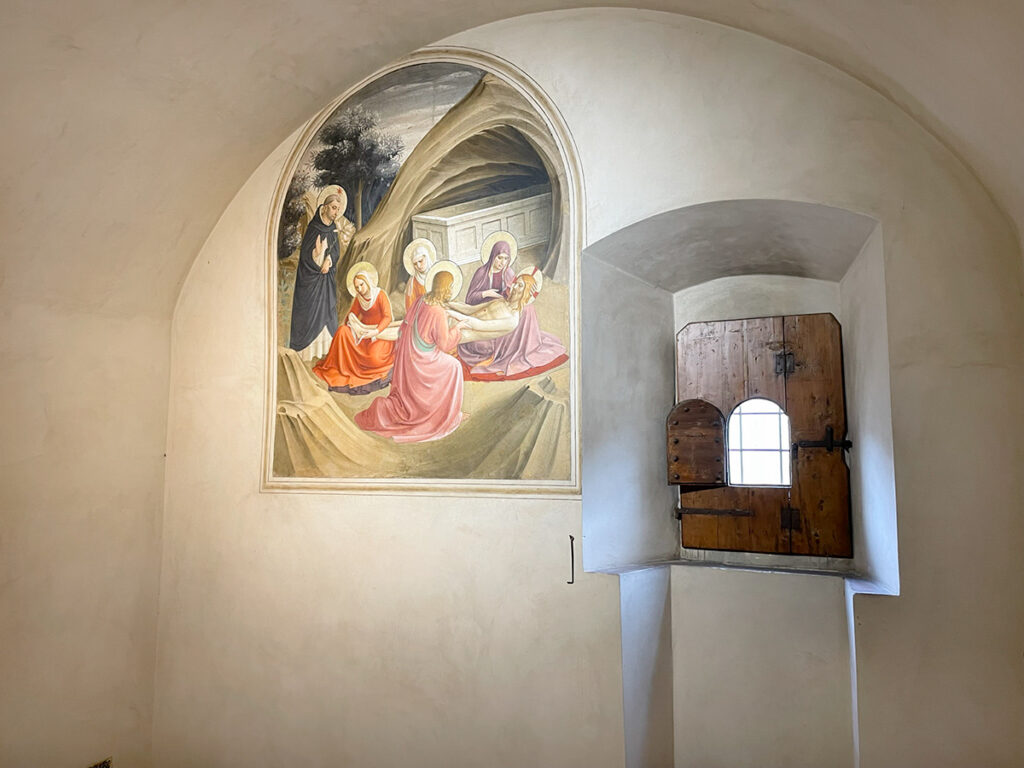
- Time to visit: 1 hour
- Tickets: Purchase a timed-entry ticket online at B-Ticket or on GetYourGuide
A 10-minute stroll from the Medici Palace, San Marco monastery is a stunning and tranquil escape from the buzz of Florence. In 1437, on a suggestion from Pope Eugenius, as a way to “to relieve his guilty banker’s soul,” Cosimo commissioned Michelozzo to rebuild the 13th-century monastery that had fallen into disrepair over the centuries. Michelozzo’s style is particularly recognizable in the monastery’s inner courtyard with its elegant arched porticos and clean lines.
As a patron of the convent, Cosimo had a double cell reserved for himself in the dormitory as an occasional retreat from the pressures of his public life.
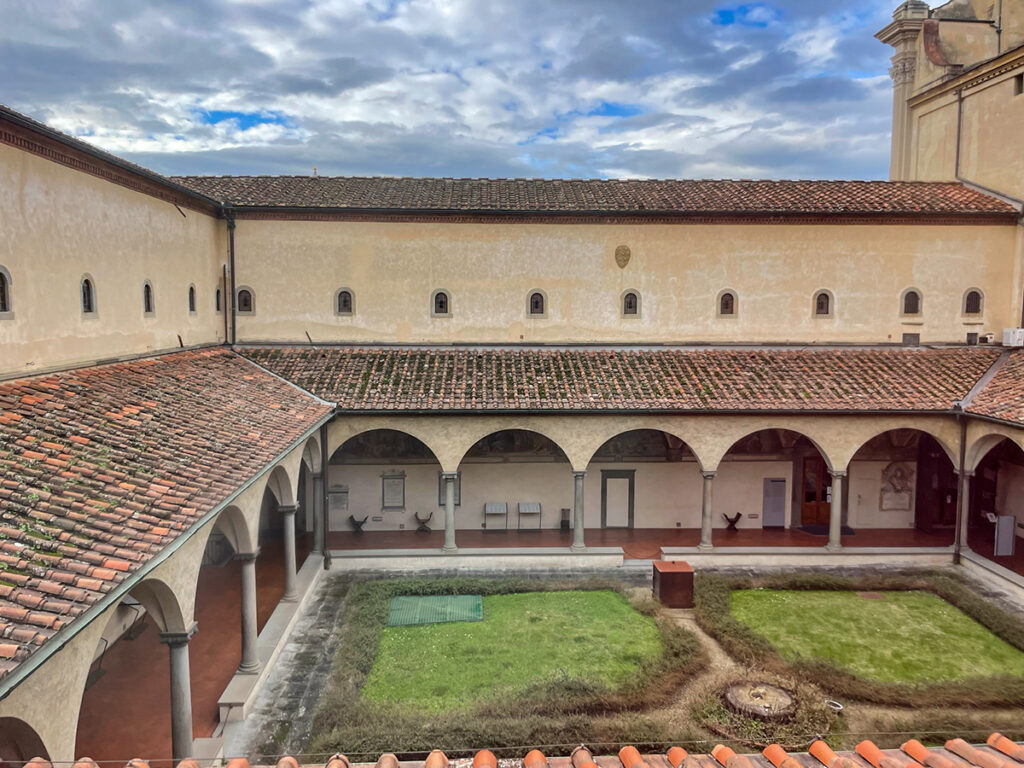
He also commissioned the extraordinarily talented friar Pra Angelico to decorate the convent by painting the altarpiece and one of his most copied frescoes, the Annunciation, which you can find at the top of the stairwell leading to the dormitory floor in the convent.
Fra Angelico also decorated many of the cells, including the one reserved for Cozimo, with stunning frescos. These tiny barren cells with Renaissance art painted on their white-washed walls give you a unique glance into the hidden treasures of Medici Florence.
There is a gorgeous museum of Fra Angelico’s paintings on the ground floor of the convent and a stunning library on the first floor.
Palazzo Pucci
As you stroll from the Medici Quarter to Piazza dell Duomo, take a slight detour and follow via dei Servi to walk past Palazzo Pucci, the former home of the Pucci family and one of Medici Florence’s hidden gems. You will see that one of the ground floor windows had been walled off. It hides a sinister story of conspiracy and revenge associated with Cosimo I de Medici.
Pandolfo Pucci was a member of Cosimo’s court until he was dismissed for immoral conduct. To take revenge on Cosimo I, the disgruntled nobleman posted two assassins behind that very window to kill Cosimo as he passed along the street on his way to Piazza della Santissima Annunziata for mass.
The plot was foiled in the end, and Pandolfo and his assassins were executed. In his own revenge, Cosimo ordered the window to be bricked in as a warning never to threaten Medici supremacy, and it has remained so ever since.
Medici Florence: The Two Squares
From Palazzo Pucci, it is a 2-minute stroll to Piazza del Duomo – the heart of the religious life in Florence and home to the most iconic sight in Florence – the Florence Cathedral.
Piazza del Duomo
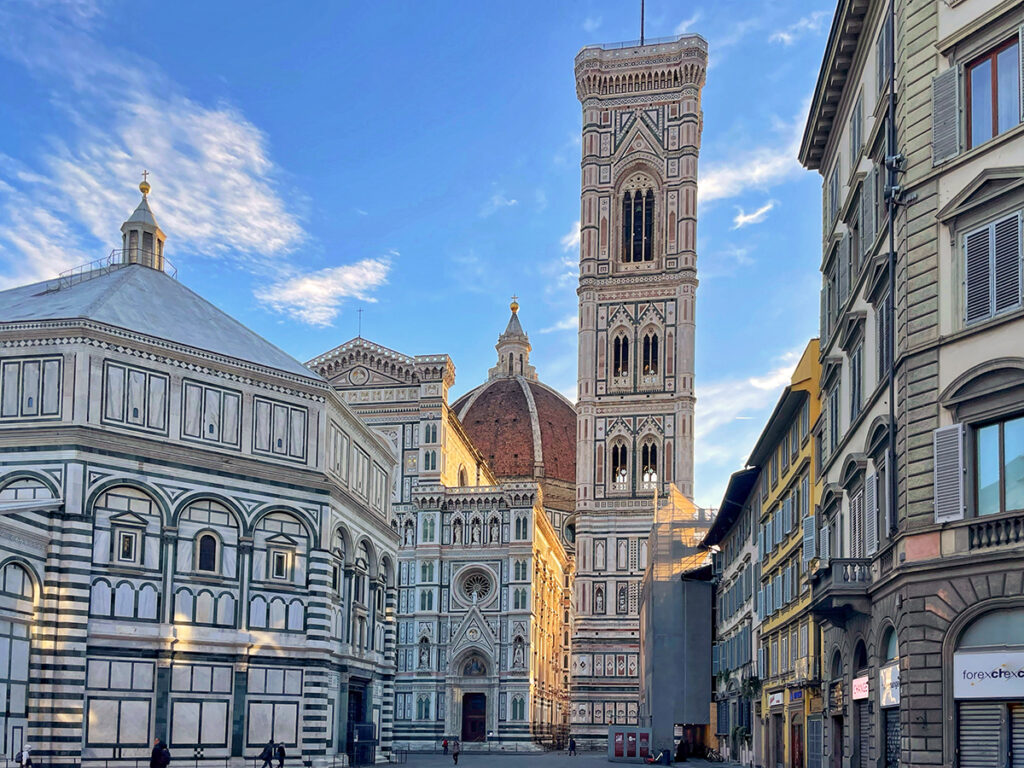
- Time to visit: 1-1.5hrs with Dome climb
- Tickets: Duomo & Brunelleschi’s Dome Ticket with Audio App
The magnificent Florence Cathedral (Cattedrale di Santa Maria del Fiore), or simply the Duomo, one of the most recognizable buildings in the world, has been the heart of the religious life of Florence for centuries, and its history is intertwined with that of the Medici family.
In the 13th century, Giovanni dei Medici, the founder of the Medici bank, was buried in the old basilica of Santa Reparata that now lies underneath the cathedral.
Later, in the 15th century, the Medici funded Filippo Brunelleschi’s construction of his ingenious dome for the cathedral a century after the completion of the cathedral itself.
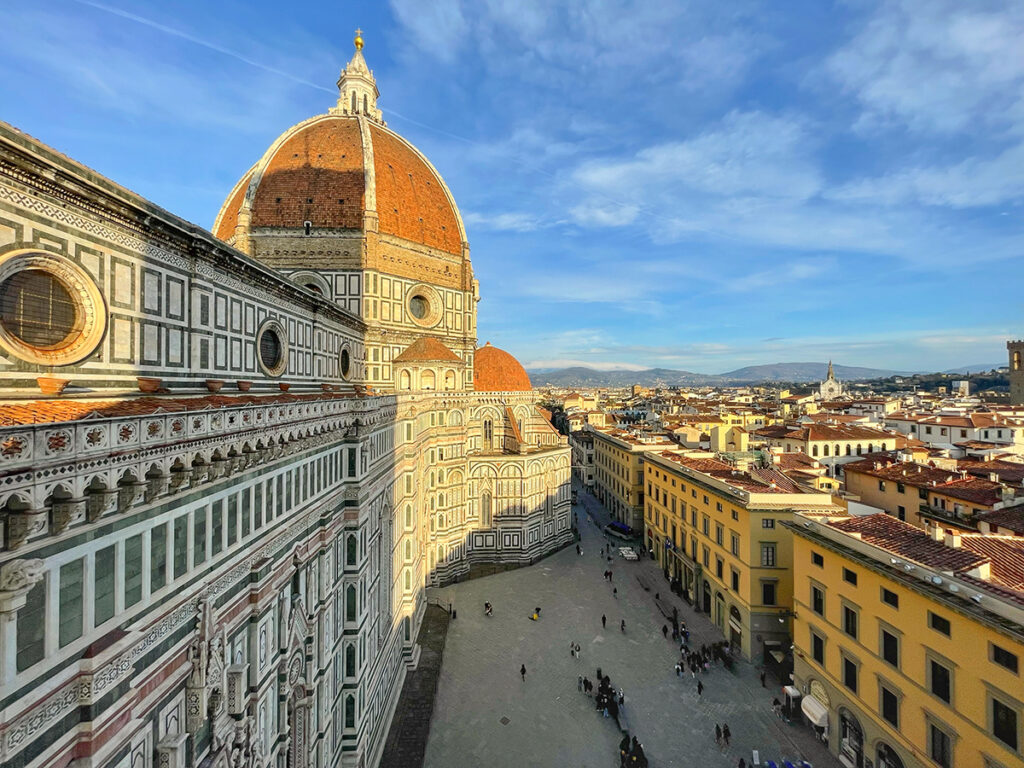
The infamous Pazzi conspiracy – an attempt to murder Lorenzo and Giuliano de Medici, also happened in the cathedral in 1478. The conspirators succeeded in killing Giuliano, Lorenzo’s brother.
In the following century, when Florence ceased being a Republic and became a Duchy ruled by the Medici family, Cosimo I, the first Duke of Tuscany, commissioned a series of works that transformed the cathedral’s interior. These works included Vasari’s “Last Judgement”, painted on the dome’s interior.
If you have the time, join an organised tour to climb the cathedral’s dome to see Vasari’s frescoes up close and enjoy fantastic views over Florence.
Once you are finished at Piazza del Duomo, follow Via dei Calzaiuoli to the second most important square in Florence – Piazza della Signoria.
Piazza della Signoria
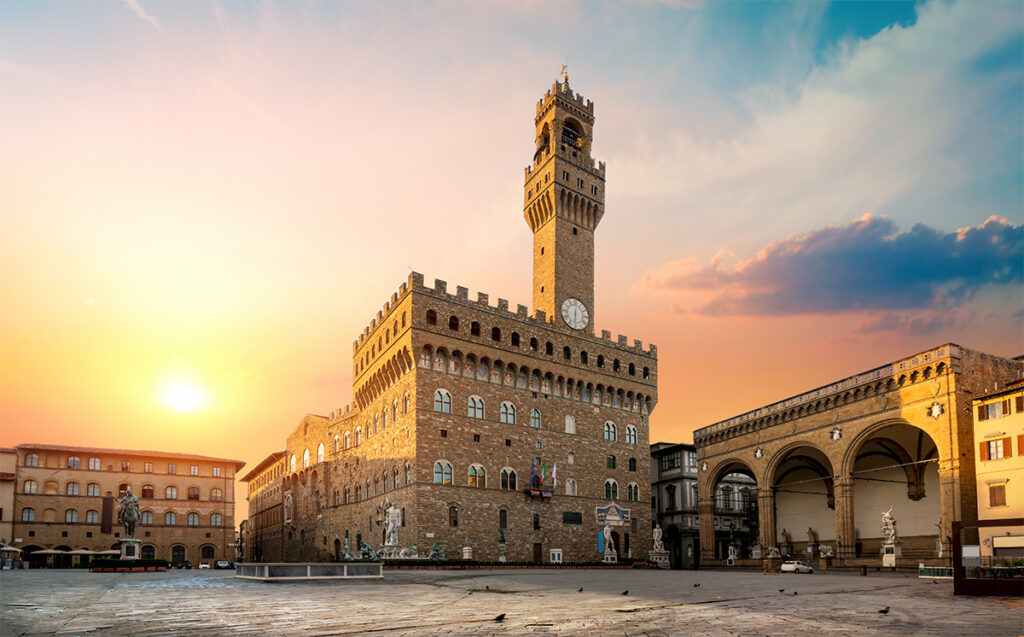
- Time to visit: 30 – 45 min
While Piazza del Duomo has been the centre of religious life in Medici Florence, Piazza della Signoria has been the heart of the city’s civic life. It was a site of debates, free speech, executions and political turmoil.
One of the most significant events in Medici Florence was Giralomo Savinorola’s rise to power. An ascetic Dominican prior, Savonarola preached against the corruption of the church, despotic rule, and the exploitation of the poor.
Savonarola famously predicted the death of Lorenzo de Medici and, in 1494, became the moral dictator of Florence when the Medici were exiled from the city.
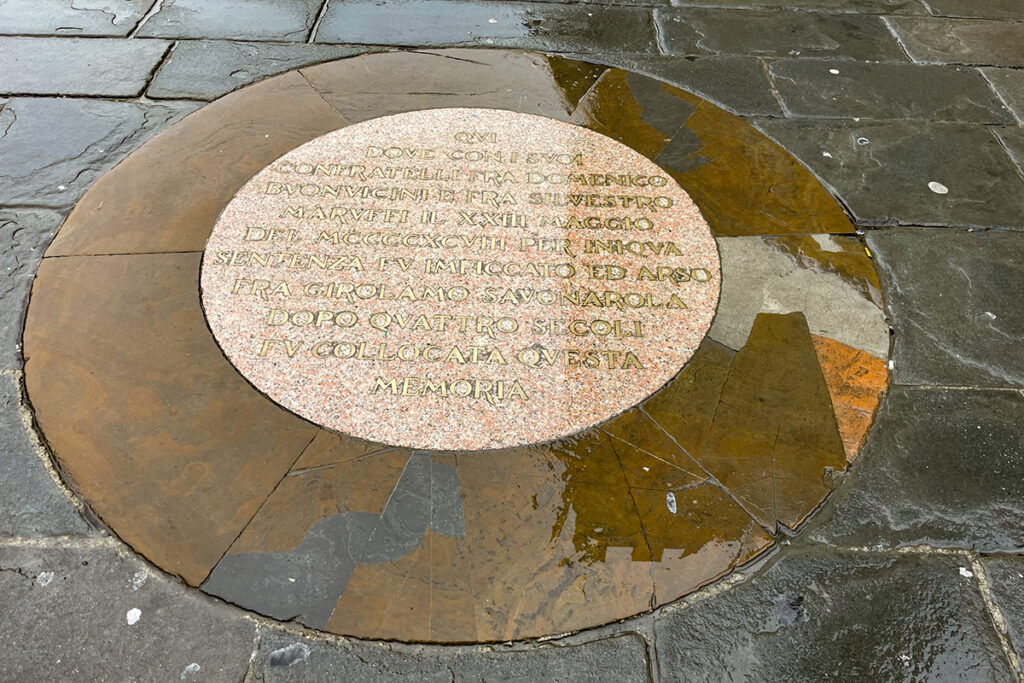
A round plaque on the cobblestones in front of Palazzo Vecchio marks the spot where Savonarola and his followers carried out the infamous Bonfire of the Vanities, burning a large pile of books, fine Renaissance art, and items of luxury. Less than a year later, on May 23, 1498, Savonarola was hanged and burned on the same spot.
The most artistically appealing feature of Piazza della Signoria is, no doubt, the Loggia dei Lanzi. Originally built as a forum for free speech from where any citizen of Florence could address the masses, in Medici times, the loggia had been transformed into an open-air art gallery.
The transformation began when, in 1494, the Florentines revolted and expelled the ruling Medici family from the city. To celebrate, the people of Florence moved Donatello’s statue of Judith and Holofernes from the Medici Palace to the piazza. The statue that depicts a woman decapitating a tyrant was seen as a symbol of ending the tyranny of the Medici.
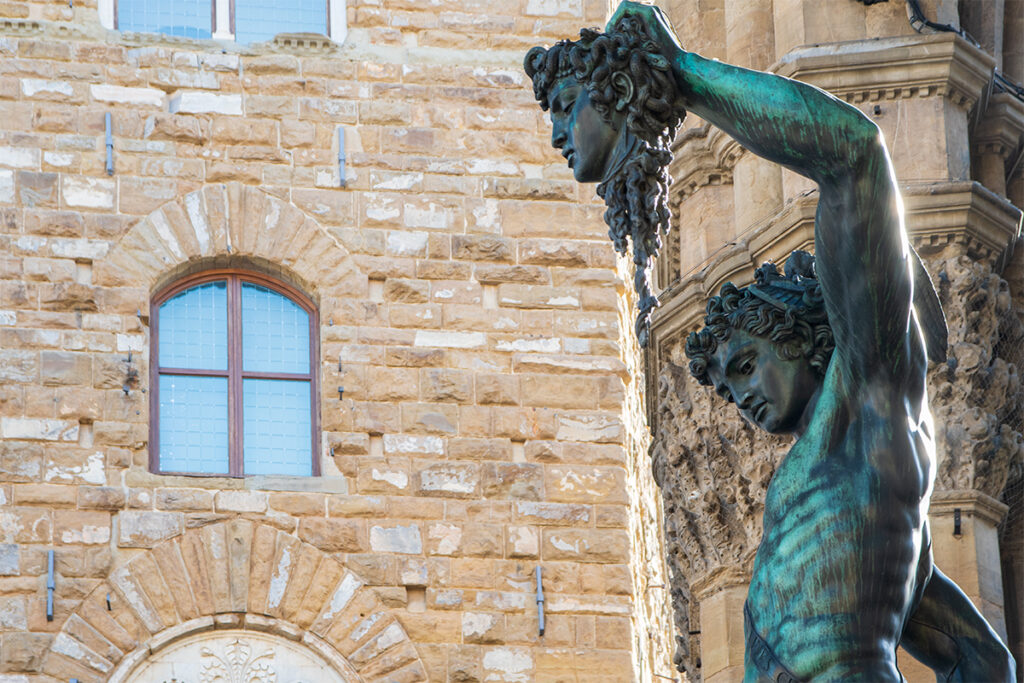
When the Medici returned to Florence and Cosimo I became the Duke of Tuscany, he also used the power of symbols to affirm the power of the Medici by commissioning Benvenuto Cellini to create a sculpture for the loggia depicting the mythical hero Perseus who beheaded Medusa.
The sculptures you see in the loggia today were more than expressions of art. They were a symbolic demonstration of power by the Medici family.
Palazzo Vecchio
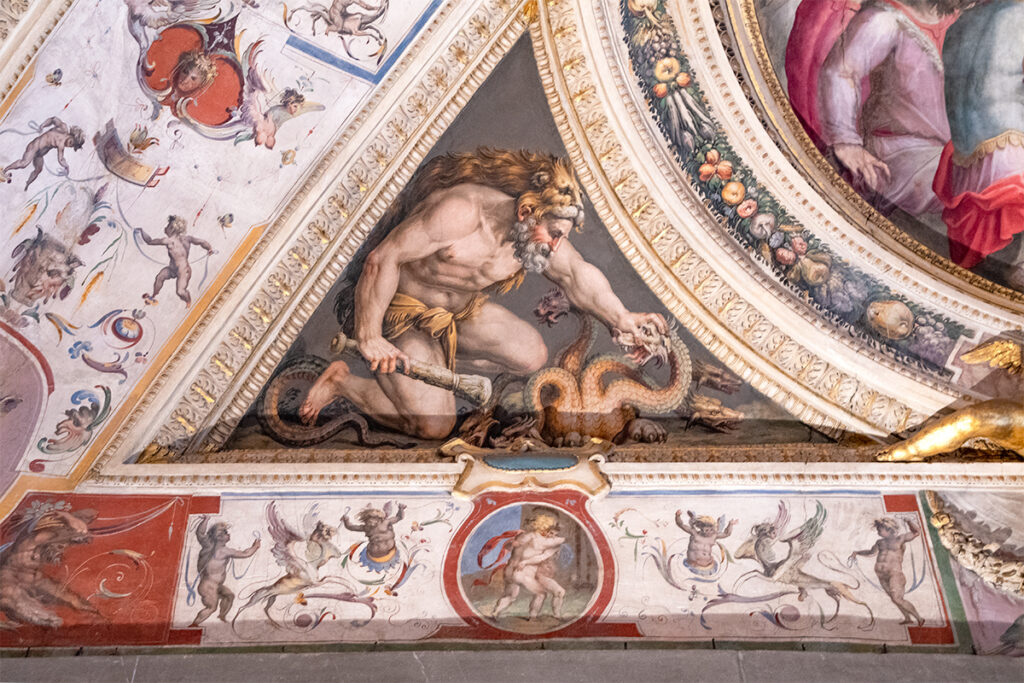
- Time to visit: 1-1.5 hrs
- Tickets: Purchase a timed-entry ticket online at Florence Civic Museums or on GetYourGuide (inc. video guide)
- Best Tour: Palazzo Vecchio Secret Passageways Tour
Dominating Piazza della Signoria, Palazzo Vecchio was built in 1299 to house the government of Florence, which at the time was constituted of 8 elected Priors who represented the different trade guilds. In the following century, the structure of the government changed from the 8 priors to just one man – Seniore de Firenze. The palace was renamed accordingly – Palazzo della Signoria.
The palace came into its golden age in 1540 when Cosimo I de Medici became the Duke of Florence and moved his official seat here from the original family palace, Palazzo Medici-Ricardi. While the Medici only occupied Palazzo Vecchio for nine years before moving to Palazzo Pitti across the Arno River, these nine years were the palace’s glory days.
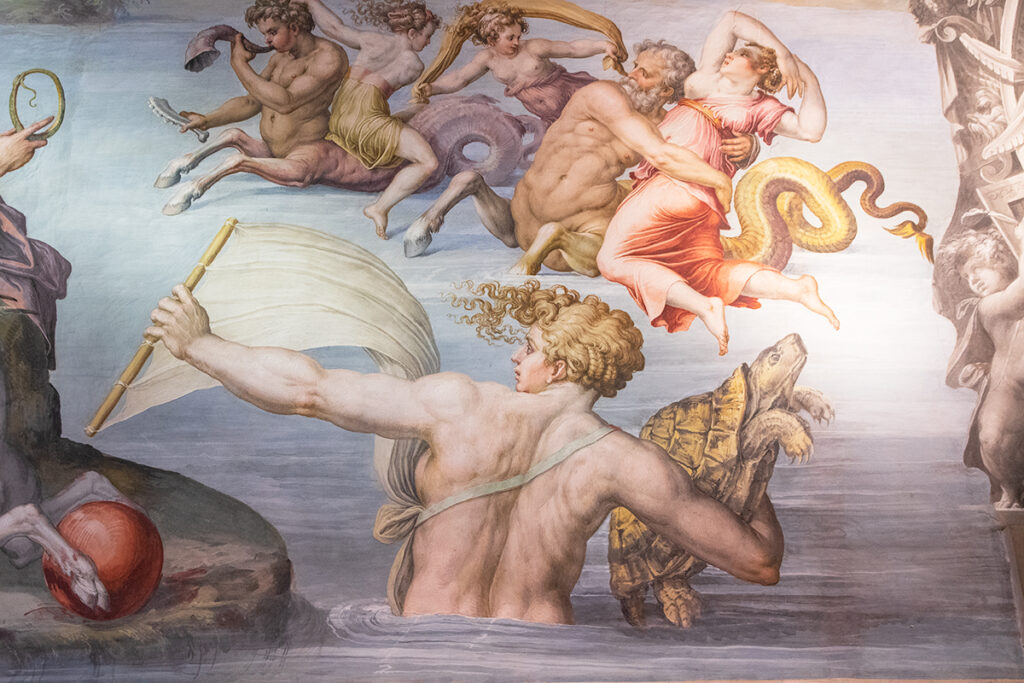
The current interiors of the palace (the parts of it that are open to the public) are the result of a major remodelling by Giorgio Vasari – the go-to artist and architect in 16th century Florence, on commission from Cosimo I.
The interior of the palace is spectacular. The guest apartments on the lower floor, including the rooms named after Cosimo the Elder, Lorenzo the Magnificent, and Leo X – Lorenzo’s son Giovani de Medici, who became the first Medici pope, are some of the finest examples of Renaissance art. These rooms are mirrored by the Royal Apartments upstairs, including the rooms of Cosimo I and his wife, Eleonora of Toledo.
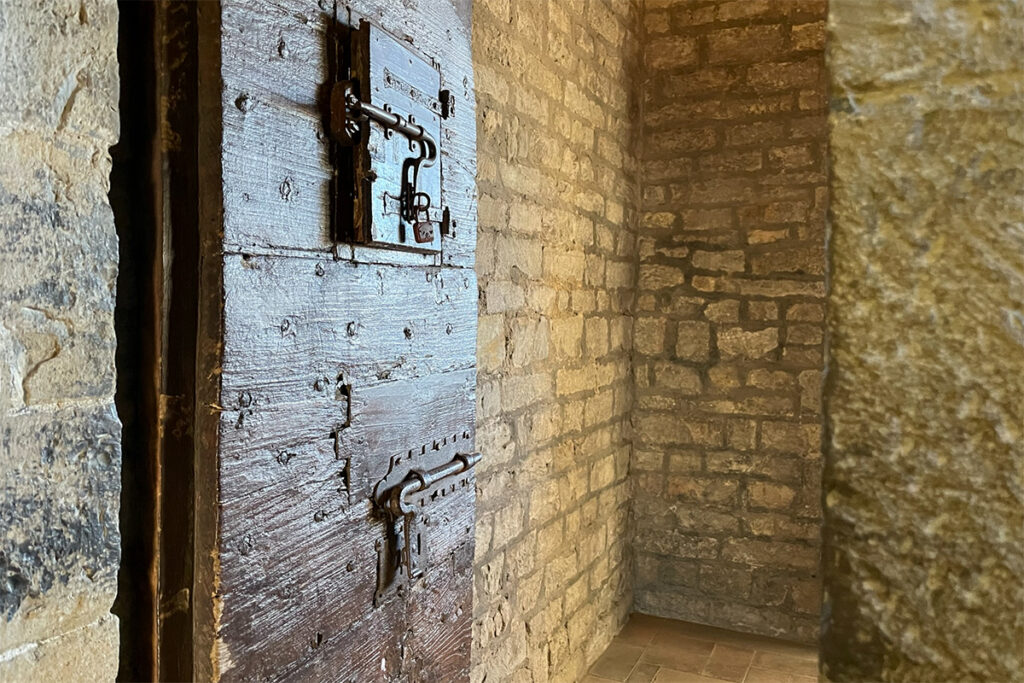
Behind its splendour, Palazzo Vecchio hides many secrets, from Da Vinci’s lost fresco and Dante’s death mask to Cosimo de Medici’s prison cell and a network of concealed passageways inside its walls constructed when Cosimo I and his court occupied the palace. You can find more details and images in my Guide to Visiting Palazzo Vecchio.
When the Medici moved their residence to the Pitti Palace, this palace became ‘the Old Palace’ or Palazzo Vecchio.
Uffizi Gallery
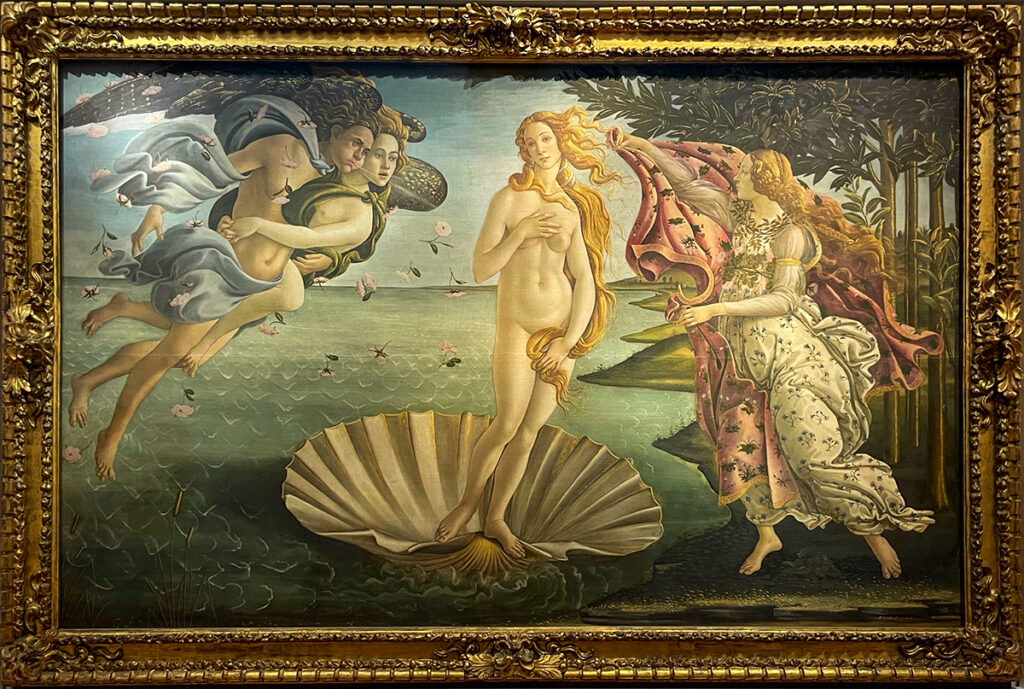
- Time to visit: 1.5 – 2hrs
- Tickets: Purchase a timed entry ticket on the Uffizi website. Consider a combined ticket with Pitti Palace and Boboli Gardens. If tickets are sold out for your dates on the official website, try your luck on GetYourGuide.
- Best tour: Skip-the-Line Uffizi Small Group Tour
Uffizi Gallery may be one of the most famous art museums in the world, but the building began its life as a suite of offices. It was commissioned by Cosimo I in 1560 and built by Vasari to house the city’s administrative and legal offices.
Once the building was completed, Cosimo I’s son, Francesco I, established a personal art gallery on the rooftop loggia. The gallery contained his collection of paintings from the fifteenth century, statues, jewellery, scientific instruments, and natural curiosities.
And in 1737, the last member of the Medici family, Anna Maria Luisa, bequeathed the contents of the gallery to the city of Florence.
Uffizi Gallery is an absolute must-see in Florence, and it’s best to visit first thing in the morning when the crowds are milder. Given the sea of art on display at Uffizi, joining a guided tour is a good idea. Whichever way you visit, don’t miss the gallery of Medici family portraits on the second floor (your visit will start on the third floor).
Vasari Corridor
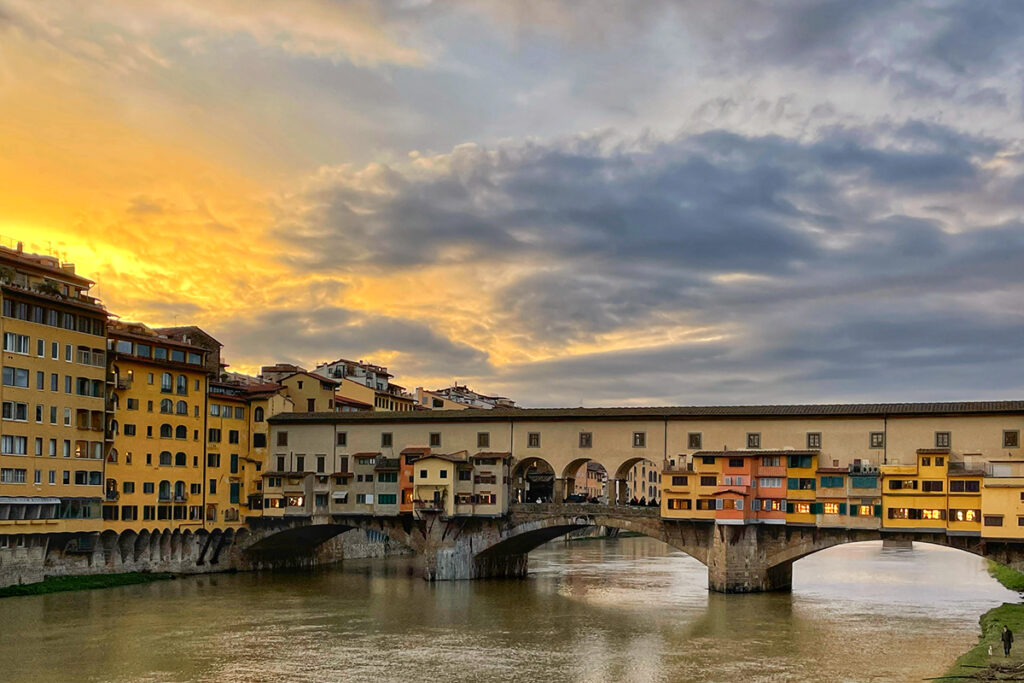
When Vasari completed the Uffizi building, he added an elevated passageway connecting Palazzo Vecchio and Uffizi with the Pitti Palace located across the river in the neighbourhood of Oltrarno.
The kilometre-long corridor was built for the Medici family to travel between their residence in Palazzo Pitti to the political hub at the Palazzo Vecchio without mingling with the masses below.
Beyond offering fantastic views of the river and the city from its many windows, the corridor contains spectacular works of art, like all Medici buildings in Florence.
Unfortunately, Vasari Corridor has been closed for renovations since November 2016. There have been many plans to re-open it. The latest is earmarked for May 2024.
Palazzo Pitti & Boboli Gardens Complex
The next part of the Medici Florence walk takes you across the Arno River and into the Oltrarno neighbourhood. It is best to set aside half a day for this part of the walk – there is quite a lot to see and a fair bit of walking to do in Oltrarno.
Palazzo Pitti
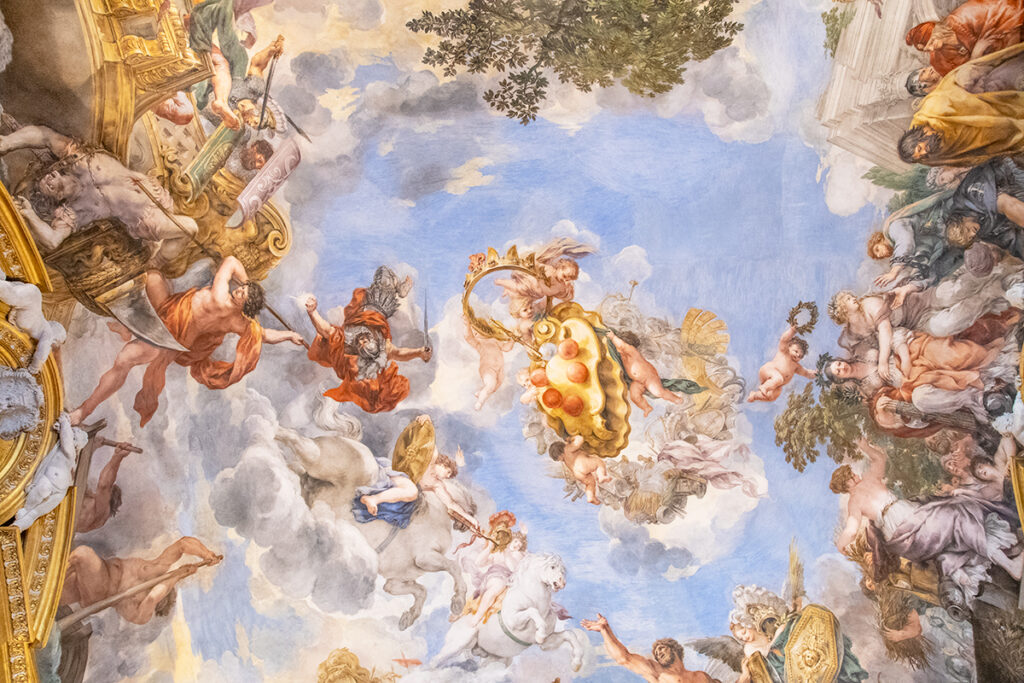
- Time to visit: 2 hrs
- Tickets: Consider a combined ticket with Uffizi Gallery and Boboli Gardens.
- Alternatively, purchase just the Pitti Palace entry tickets.
- Best Tour: Pitti Palace and Palatine Gallery Ticket and Tour
By 1548, Cosimo I and his wife Eleonor of Toledo had seven children, and Palazzo Vecchio had become too small for the growing family. Looking to move away from the cramped confines of the city, the Medici bought the sprawling palace across the river, the Pitti Palace, surrounded by expansive grounds of Boboli Hill. The lavish Pitti Palace, thanks to a facelift by the Medici, became a residence fit for a king.
Indeed, many kings lived in this palace, starting from the House of Habsburg-Lorraine (which succeeded the Medici in 1737), followed by the Kings of Italy from the House of Savoy, who inhabited the palace from 1865.
Despite the changes to the palace that successive rulers commissioned, its main treasure trove is the Medici’s collection of art displayed in the Palatine Gallery. About 500 masterpieces, including the largest concentration of paintings by Raphael in the world, as well as invaluable works by Titian, Tintoretto, Caravaggio and Rubens, are displayed against spectacular frescos, stuccoes and furnishings.
Unlike the understated elegance of Palazzo Vecchio and Palazzo Medici-Ricardi, Pitti Palace is all about ostentatious wealth. While Cosimo the Elder and Lorenzo the Magnificent sponsored much of public art and architecture, Cosimo I distanced his ducal court from the everyday people with the move to the palace across the river.
Boboli Gardens
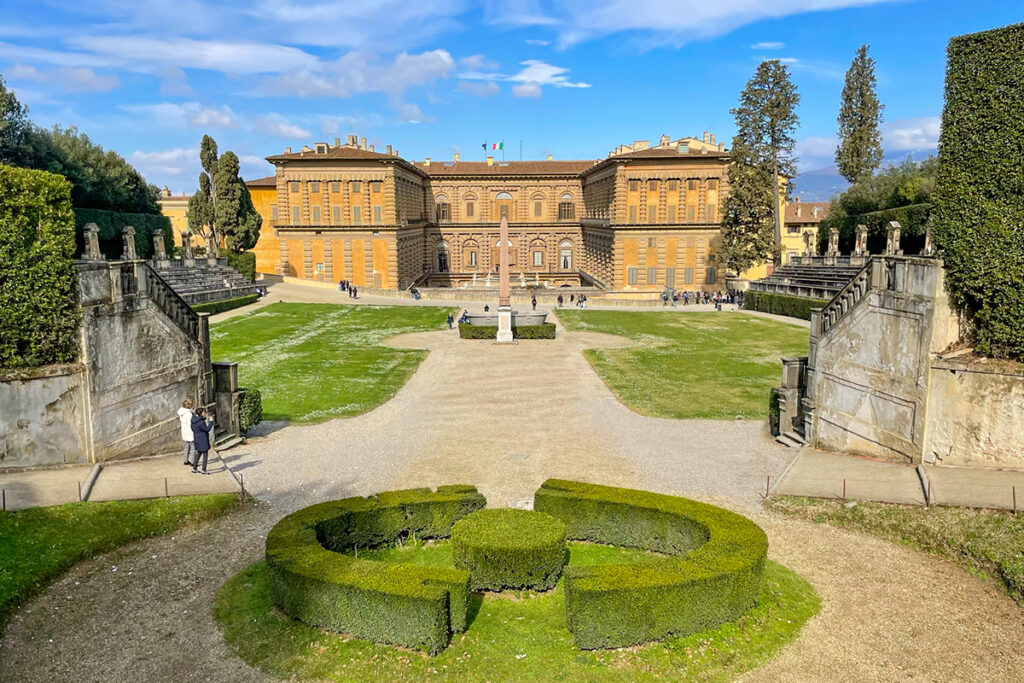
- Time to visit: 1 hr
- Tickets: Tickets: Purchase entry tickets on the Uffizi website or on GetYourGuide.
- Consider a combined ticket with the Uffizi Gallery and Pitti Palace.
The Boboli Gardens flanking the new ducal residence are among the earliest Renaissance gardens that inspired many European courts. The creation of the sprawling garden complex was initiated at Eleonora of Toledo’s request but took several decades to complete. With roads and piazzas, theatre and statues, stables and grottos, the garden was laid out as a miniature city assessable only to the court and its guests. Although at 45,000 square meters, it’s not that miniature.
Of course, today, the gardens don’t have the same impact as they did in Medici’s time, but they are still lovely, and they offer fantastic views of the city below, particularly from the Belvedere Fort.
As you wander through the gardens, head towards the Porta Romana Gate at the opposite end of the gardens from the Pitti Palace to visit the final trace of Medici Florence on this itinerary – one of the ancient city gates.
Porta Romana
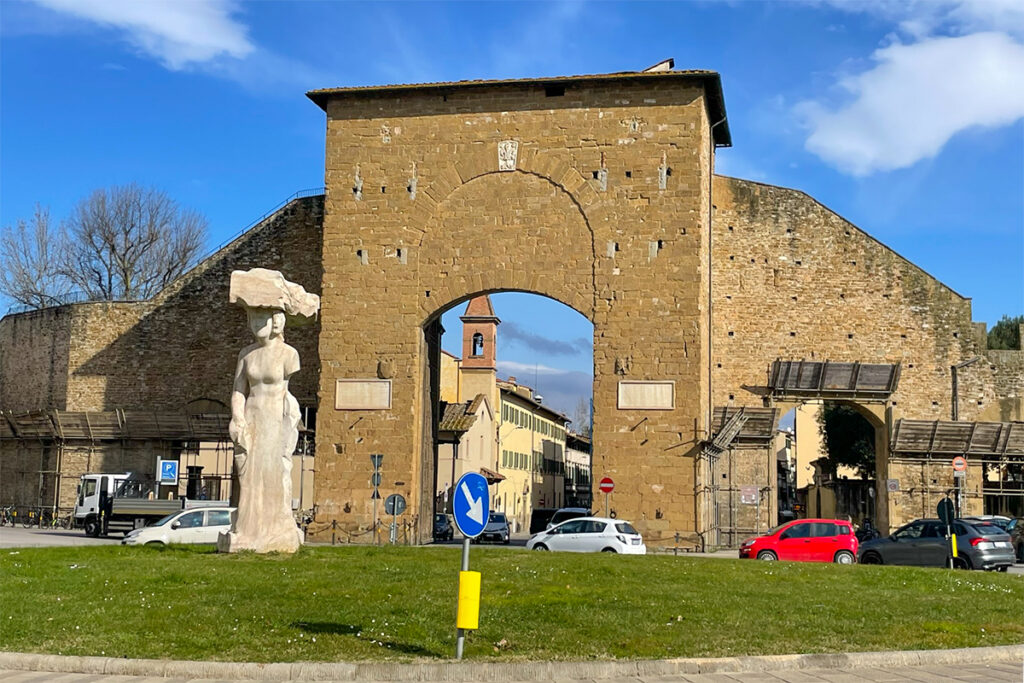
- Time to visit: 30 min, including the walk from the Boboli Gardens exit
In the time of Medici, Florence was encircled by a stone wall punctured by several city gates. A few of the gates remain to this day, and you can see one of them – Porta Romana, near the Porta Romana exit from the Boboli Gardens.
In fact, the gardens are bordered by the ancient city wall that runs in both directions from Porta Romana. This particular gate opened onto the road leading to Rome.
If you are a fan of Dan Brown’s Inferno, you’ll recognise Porta Romana as the gate through which Robert Langdon and Siena Brooks entered the old city of Florence and where they snuck into Boboli Gardens by climbing over the city wall.
Where to Stay in Florence
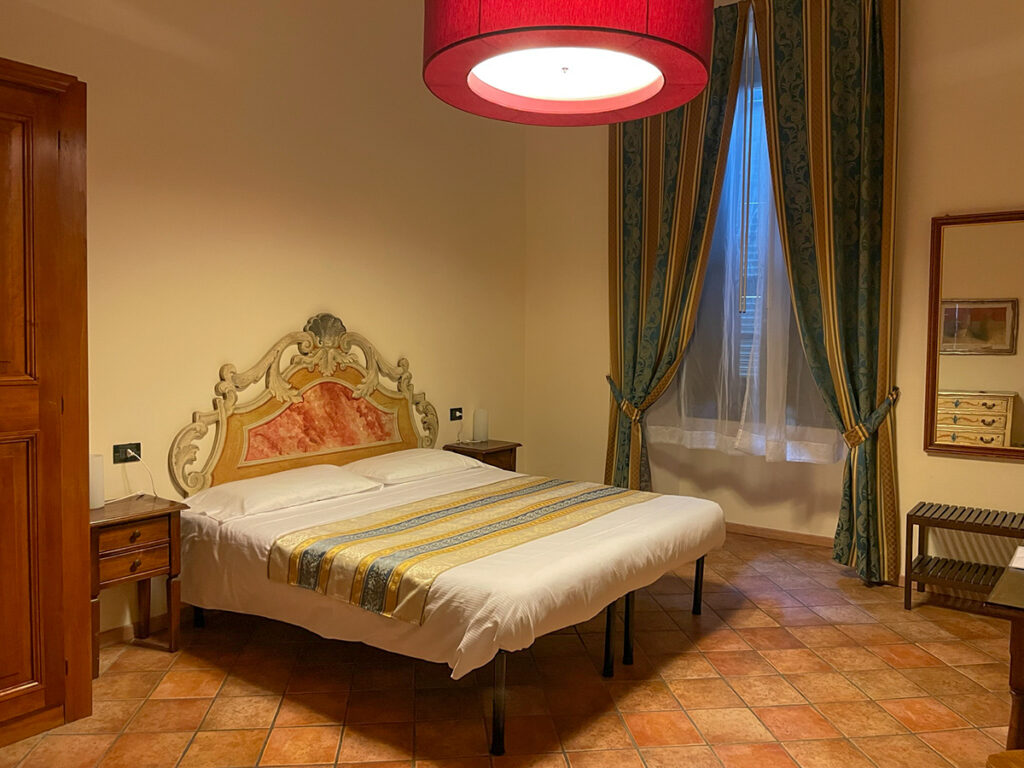
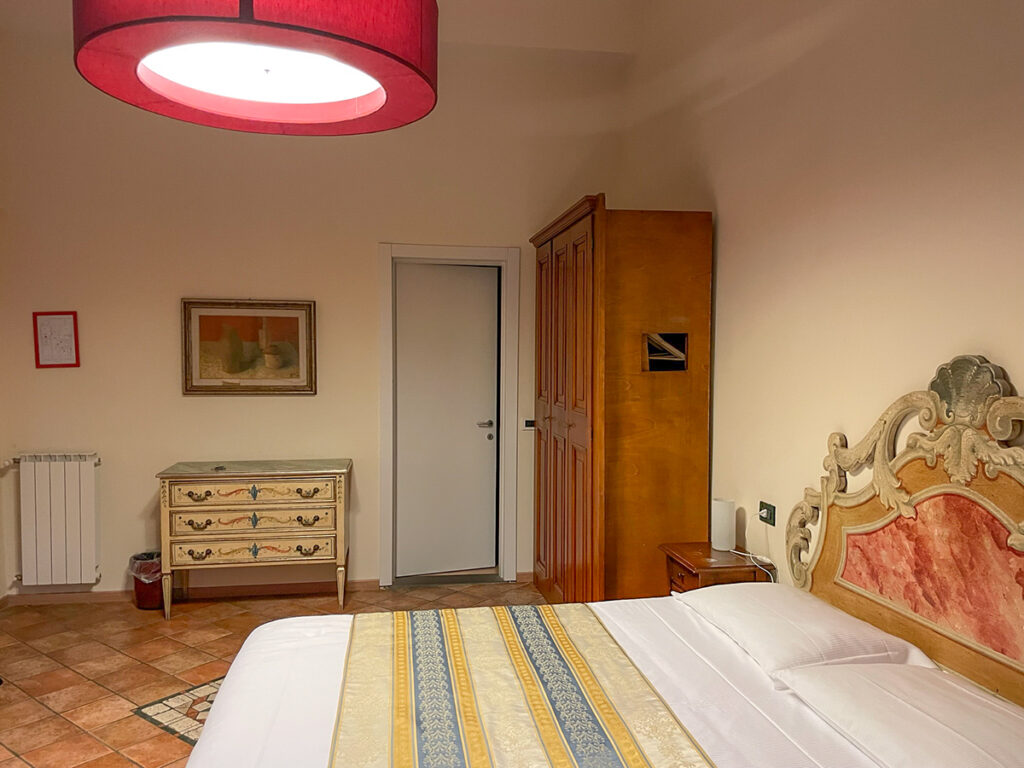
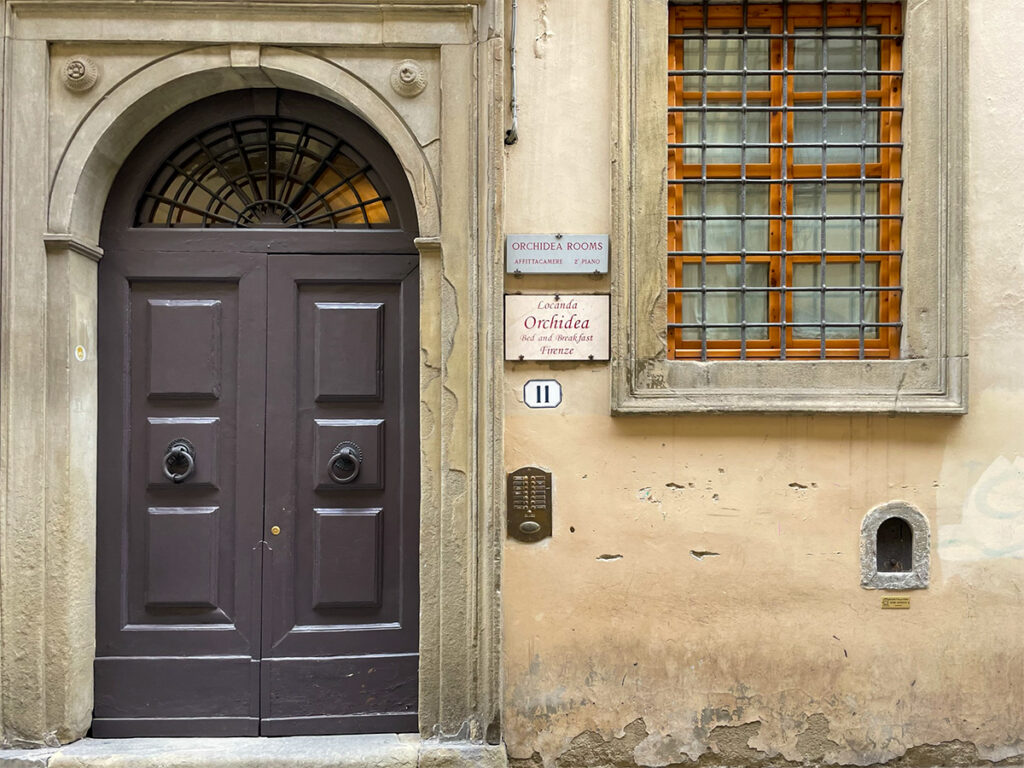
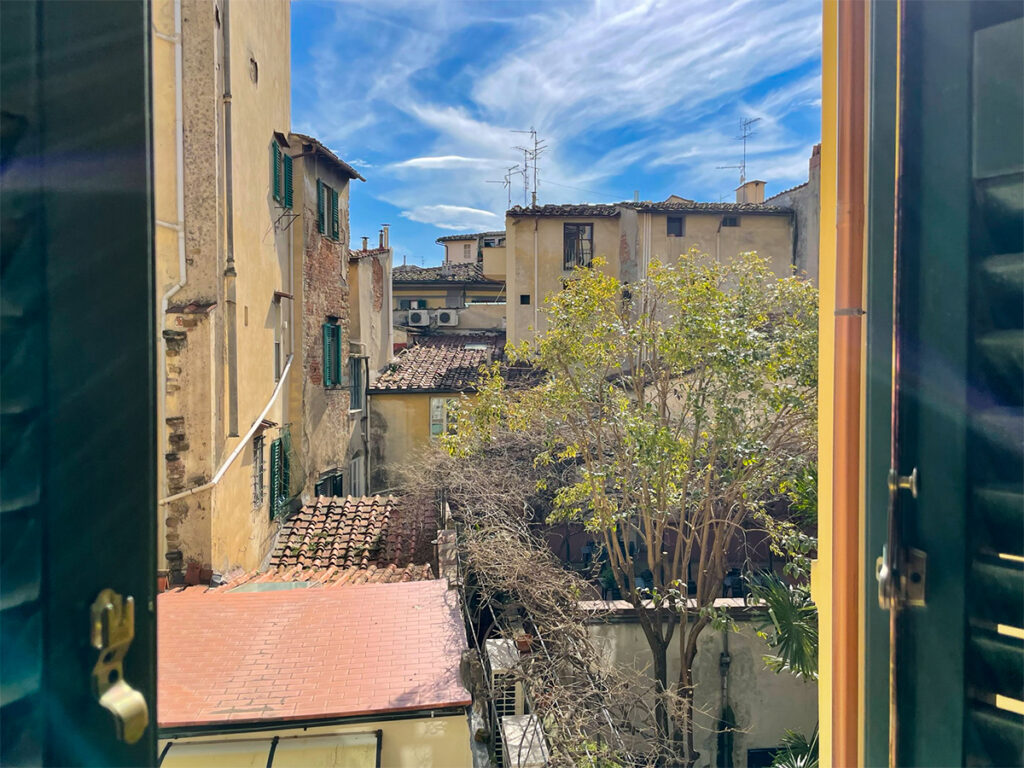
I spent almost two weeks in Florence staying at Locanda Orchidea, and I couldn’t recommend this charming B&B highly enough. Located in a 13th-century historical palace, Torre di Donati, that may have belonged to Dante’s family, Locanda Orchidea is full of character.
More on Exploring Italy
- Things to Do in Vinci Italy: Exploring Leonardo’s Adorable Hometown
- Rome in a Day: Best of Ancient Rome & the Renaissance
- 16 Things To Do in Assisi – A Walk Though a Medieval Hilltop Town
- 12 Charming Assisi Streets with Best Views & Medieval Vibes
- Uncover the Hidden Treasures of Roman Assisi, Umbria
- Quo Vadis – Assisi B&B Where Comfort Meets Medieval Charm
- 18 Weekend Breaks in Italy: Top Destinations to Visit and Things to Do
- Medici Florence – a Self-Guided Walk in the Cradle of the Renaissance
- Guide to Visiting Palazzo Vecchio: Must-see Art and Hidden Gems
- Leonardo da Vinci in Florence: In the Footsteps of the Renaissance Master

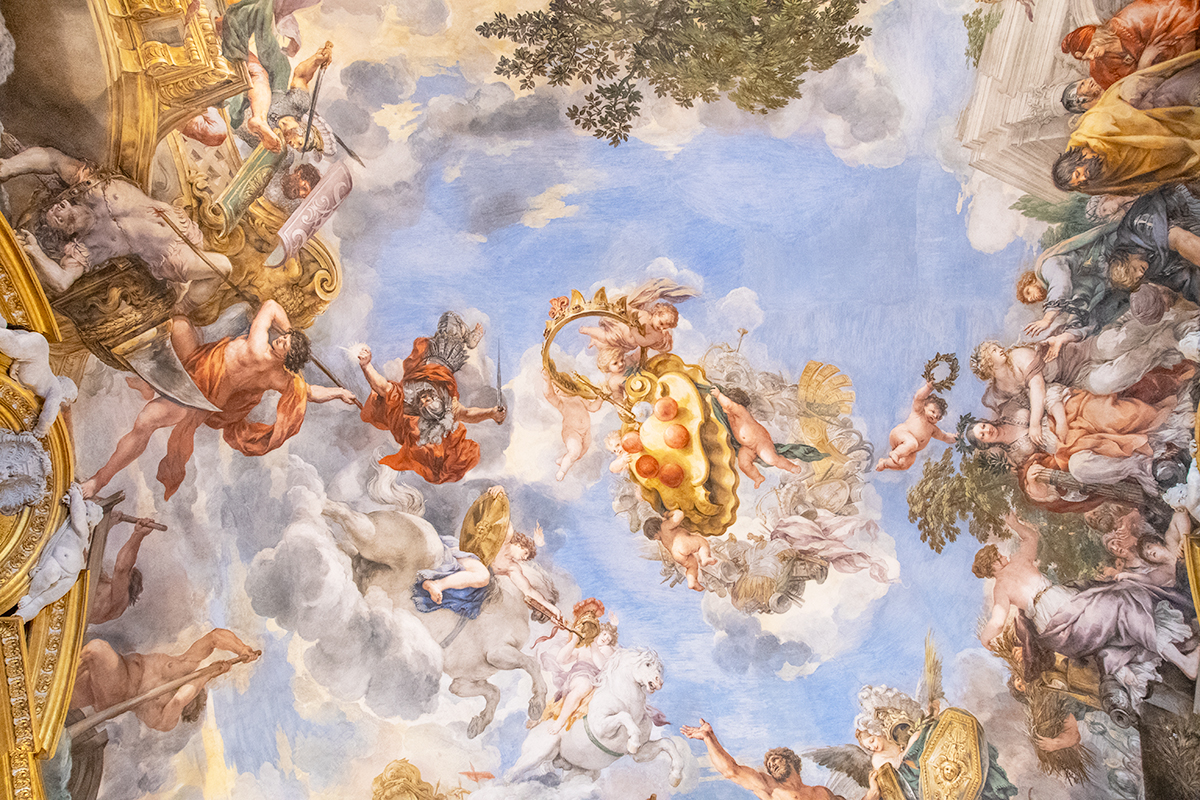
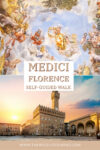

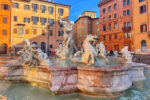
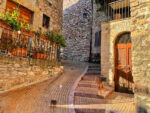
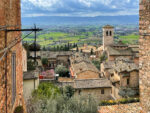
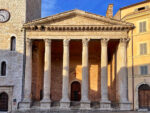
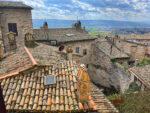
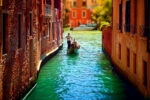
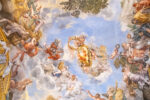

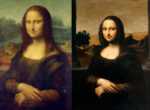
Love this post. Florence is full of Renaissance art wherever you look. And you don’t always get crowds. Visited in July a few years back, the usual suspects (Santa Croce, Duomo, Uffizi) were super crowded, even queues before opening. The Ognissanti , Santa Trinita and even Santa Maria Novella were not! Love Florence